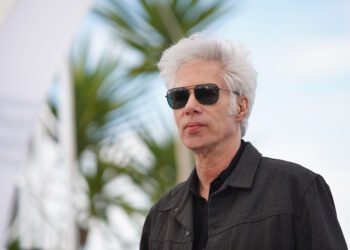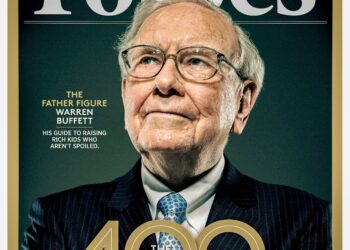The Super Bowl halftime show is a piece of Americana that draws more than 100 million viewers, making it the marquee musical performance of the year. The most-watched halftime show in history was Michael Jackson’s 1993 performance at Super Bowl XXVII, which drew 133.1 million viewers. Last year’s show featuring Usher and a cast of surprise guests drew 123.4 million.
So when Kendrick Lamar—the 22-time Grammy Award winner, who last week took home five awards for his song “Not Like Us”—takes the stage for the Super Bowl LIX halftime show, there’s a chance it will register among the most-watched ever.
And none of it would have been possible if not for a bold decision by Fox and its sketch comedy show, In Living Color, more than 30 years ago, which changed the Super Bowl halftime show forever.
FROM MARCHING BANDS TO “ELVIS PRESTO”
For the first 20-plus Super Bowls, the halftime show was a bathroom break bridging the two halves of the game—a nonevent at best, and at its worst, cringeworthy.
The first Super Bowl halftime show in 1967 featured the University of Arizona and Grambling State University marching bands, along with trumpeter Al Hirt. Marching bands were a mainstay throughout the ’70s and ’80s with themed events peppered in, including a Salute to the Caribbean (1979), a makeshift flash mob doing synchronized Jazzercise (1988), and a strange tribute to the Peanuts comic strip (1990). The halftime show may have reached peak cringe in 1989 when it brought us Elvis Presto—half Elvis impersonator, half magician—for a borderline-creepy display of bad music, worse dancing, and what was billed as the world’s largest card trick.
With this kind of track record, the Super Bowl routinely lost most of its audience during halftime, something the NFL had come to accept as normal.
FOX’S AUDACIOUS BET
During a routine staff meeting in 1991, as legend has it, despite CBS owning the exclusive Super Bowl rights, Fox president Jamie Kellner saw an opportunity. He proposed an audacious idea: counterprogram against the Super Bowl halftime show, television’s most predictable dead zone.
“Jamie started talking about how nobody watches the halftime,” Dan McDermott, then a Fox programming executive, said. “He said, ‘We should do a live episode of In Living Color. We’ll make a big deal out of it. We’ll convince America to turn the channel at halftime.’”
For a network billing itself as the “Bad Boys of Television,” it was a perfectly on-brand act of disruption. In Living Color creator Keenen Ivory Wayans agreed.
“I thought, This is genius,” he said. “The Super Bowl was the biggest thing in television. No one would dare take on the Super Bowl. We have to do that.”
Fox’s plan was floated by a $2 million infusion from sponsor Frito-Lay, though the brand was nervous about potential live TV mishaps sparking controversy. To counter this, Fox agreed to air the show on a slight delay. It then launched an aggressive marketing campaign, flooding airwaves with promos and turning its studio into a star-studded party venue to host the “live” event.
All that was left to do was see what the NFL had on deck for the Super Bowl XXVI halftime show to know what they were up against.
HOW TO STEAL 29 MILLION VIEWERS
The NFL walked right into Fox’s trap. The 1992 halftime show theme was “Winter Magic,” featuring figure skaters Brian Boitano and Dorothy Hamill performing on tiny portable rinks while surrounded by dancers in snowflake costumes and a 30-foot inflatable snowman. It was yet another tone-deaf production that didn’t appeal to NFL fans in any way.
Viewers tuned out en masse, flipping over to catch In Living Color’s “Super Halftime Party.” Nearly 29 million viewers—about 11% of the Super Bowl’s total audience—switched over to watch the Wayans brothers, Jim Carrey, and the rest of the iconic sketch comedy team perform Super Bowl-related skits, taking aim at football culture.
In the bottom left corner of the broadcast, Fox posted a clock counting down to the second half, so viewers didn’t have to flip back over to CBS to check the game status. This kept viewers engaged throughout the show.
THE BIRTH OF THE MODERN SUPER BOWL HALFTIME SHOW
The NFL didn’t even acknowledge Fox’s viewership heist. It did, however, resolve to never let it happen again.
In 1993, for Super Bowl XXVII, the league tapped Michael Jackson to perform at halftime. From there, they featured Prince, Madonna, Beyoncé, Bruno Mars, Coldplay, Lady Gaga, Rihanna, Usher . . . and the list goes on. Today, the Super Bowl halftime show is one of the greatest spectacles in music—a badge of honor worn by the world’s greatest acts.
So if you’re one of the 100 million-plus viewers looking forward to Kendrick Lamar performing at this year’s halftime show, you can thank Keenen Ivory Wayans, the Fox brass, and the team at In Living Color for pulling one over on the NFL.












